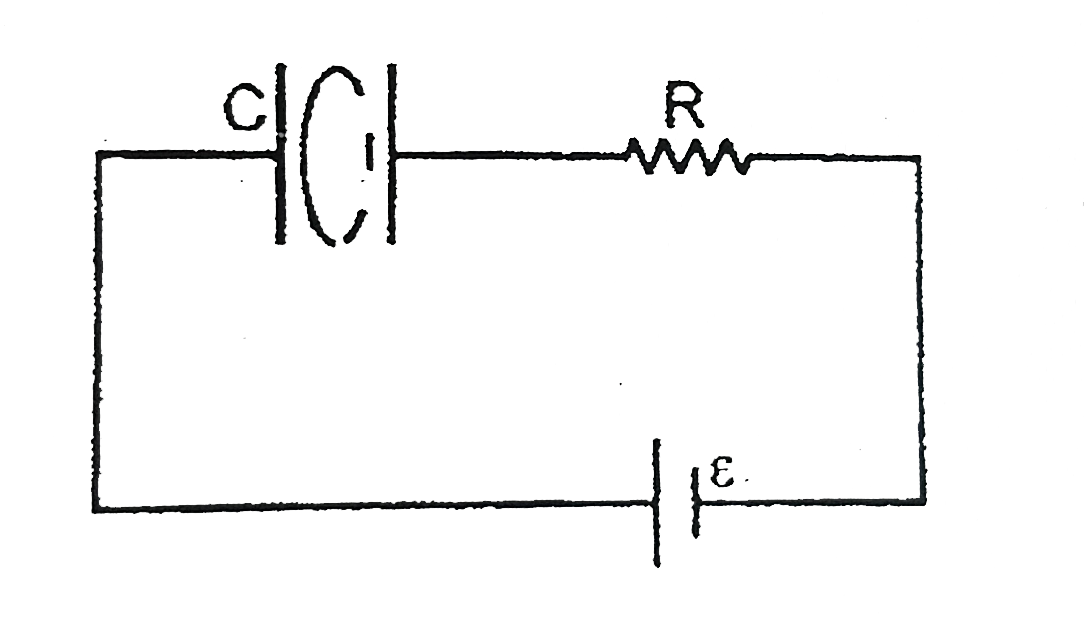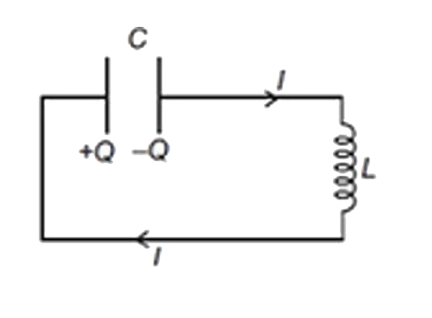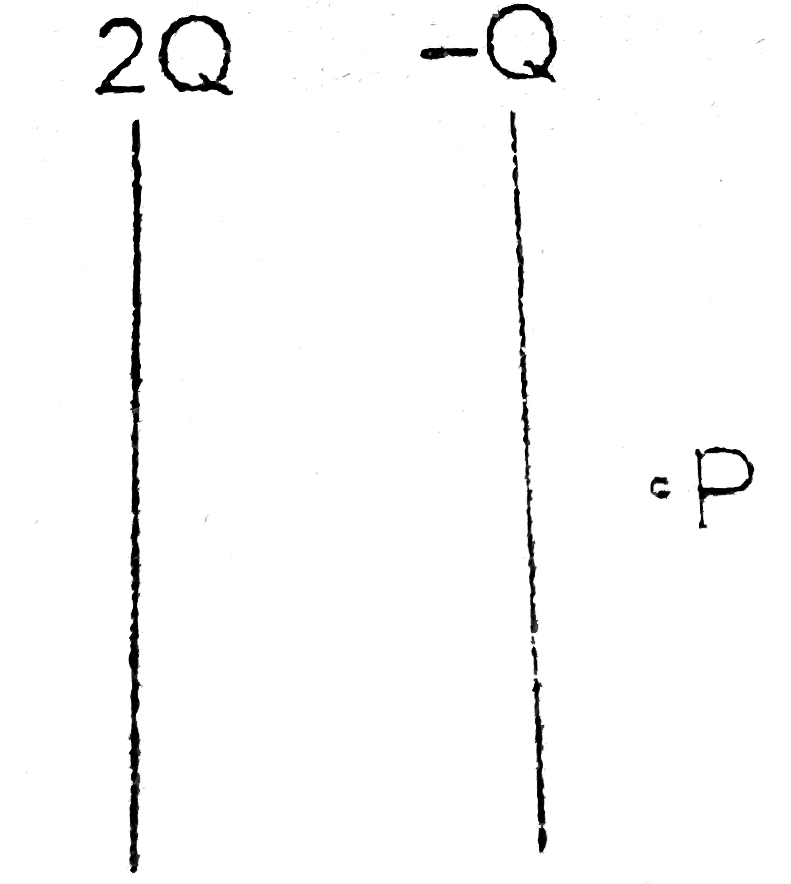In the circuit shown the capacitor is initially uncharged. The charge passed through an imaginary circular loop parallel to the plates (also circular ) and having the area equal to half of the area of the plates, in one time constant will be , -

0.63εC
0.37εC
εC2
zero
The correct Answer is:D
During the charging process, charge does not jump or cross the area between the plates.
Topper's Solved these Questions
- BOOK - ALLENCHAPTER - TEST PAPERSEXERCISE - PAPER 3100videos
TEST PAPERS
- BOOK - ALLENCHAPTER - TEST PAPERSEXERCISE - Part-1 Physics15videos
TEST PAPERS
- BOOK - ALLENCHAPTER - TEST PAPERSEXERCISE - MATHS18videos
TEST PAPERS
- BOOK - ALLENCHAPTER - TEST PAPER 4EXERCISE - PHYSICS45videos
TEST PAPER 4
- BOOK - ALLENCHAPTER - UNIT & DIMENSIONS, BASIC MATHS AND VECTOR EXERCISE - Exercise (J-A)7videos
UNIT & DIMENSIONS, BASIC MATHS AND VECTOR
Similar Questions
A parallel-plate capacitor is filled with a delectric meterial having resistivity(ρ)and dielectric constant K.The capcitor is charged and disconnected from the charging source. The capacitor is slowly discharged through the dielectric.Show that the time constant of the discharge is independent of all gepmetrical parameters like the plate area or separation between the plates. Find this time constant.
View SolutionA parallel-plate capacitor is filled half-and half with two dielectrics of dielectric constants ε1 and ε2, respectively. In the first case, one dielectric is placed over the other. In the second case, one dielectric fills half the space and the other the second half. Calculate their capacitances in the two cases. The distance between the plates is d and area of each plate is A.

[Hint:(i) In fact there are two capacitors, each of area equal to the area of a plate and thickness equal to half the plate separation. The are in series. (ii) There are two capacitors, each of thickness equal to the plate separation and area equal to half of the area of a plate. They in parallel.]View Solution
Knowledge Check
- Question 1 - Select One
In a parallel plate capacitor with plate area A and charge Q, the force on one plate because of the charge on the other is equal to
AQ2ε0A2BQ22ε0A2CQ2ε0ADQ22ε0A - Question 2 - Select One
If the plates of a parallel plate capacitor are not equal in area then quantity of charge
AOn the plates will be same but nature of charge will differBOn the plates as will as nature of charge will be differentCOn the plates will be different but nature of charge will be sameDAs well as nature of charge will be same - Question 3 - Select One
If the plates of a parallel plate capacitor are not equal in area then quantity of charge
Aquantity of charge on the plates will be the same, but nature of charge will differ.Bquantity of charge as well as nature of charge on the plates will be differentCquantity of charge on the plates will be different, but nature of charge will be the same.Dquantity of charge as well as nature of charge will be the same.
A positive charge q is given to each plate of a parallel plate air capacitor having plate area A and plate separation d, then
View SolutionIn the LC circuit shown below, the current is in direction as shown and the charges on the capacitor plates have the sign as shown. At this instant
 View Solution
View SolutionThe electrostatic force between the metal plate of an isolated parallel plate capacitro C having charge Q and area A, is
View SolutionIn a parallel-plate capacitor of plate area A, plate separation d and charge Q the force of attraction between the plates is F.
View SolutionIn the figure shown the plates of a parallel plate capacitor have unequal charges. Its capacitance is 'C' P is a point outside the capacitor and close to the plate of charge −Q. The distance between the plates is 'd'
 View Solution
View Solution

